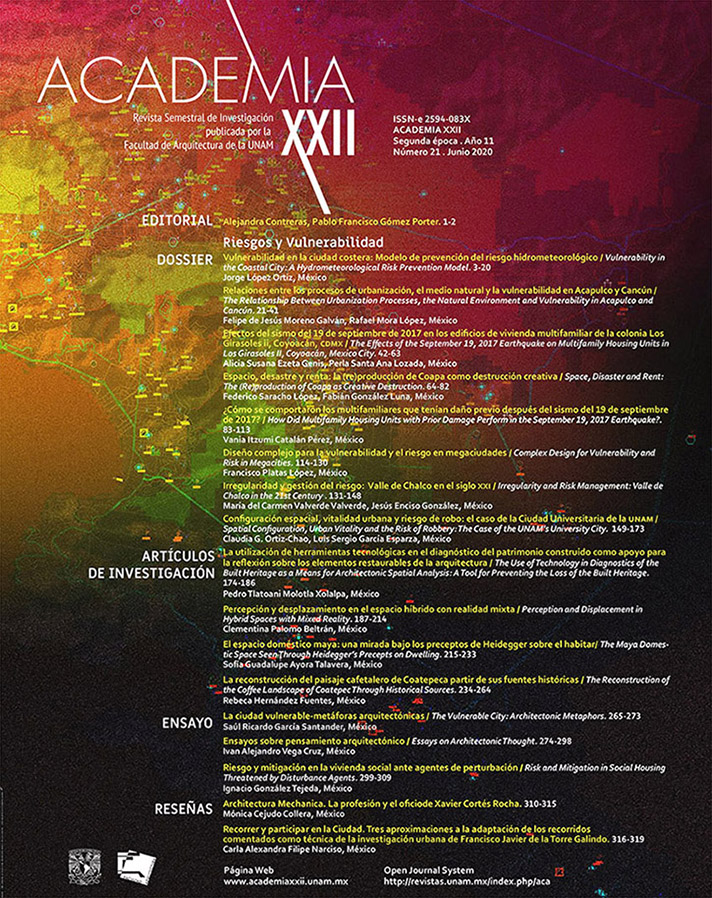Spatial Configuration, Urban Vitality and the Risk of Robbery: The Case of the UNAM’s University City
Main Article Content
Abstract
This article analyzes four spaces in the UNAM’s University City at different scales using the space syntax methodology with the goal of exploring the relationship between morphological and spatial characteristics and the incidence of robberies of pedestrians, in accordance with the reports listed on the Mexico City Data Portal. It is based on an understanding of the place of University City in modern urbanism and the way in which the ideologies that shaped it remain an essential part of the way it functions to date, emphasizing the clear difference between its layout and that of a conventional urban area. Early results indicate that, while some syntactical characteristics of the network are relevant, the morpho-spatial characteristics that have to do with functions, activities and, therefore, use and coexistence in space are the key factors for safety.

